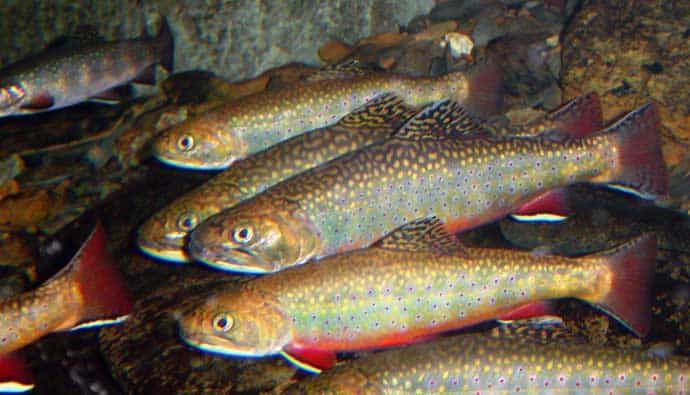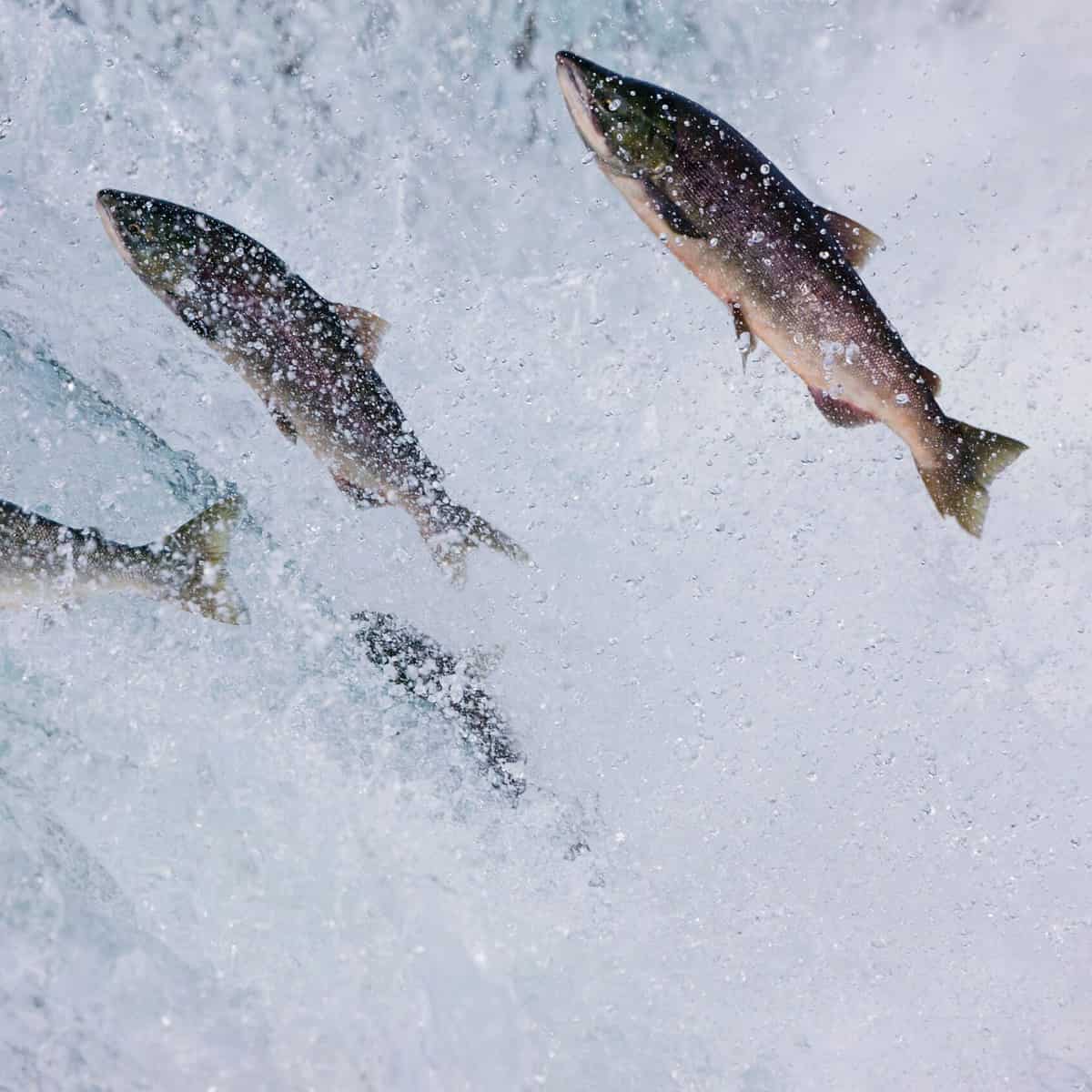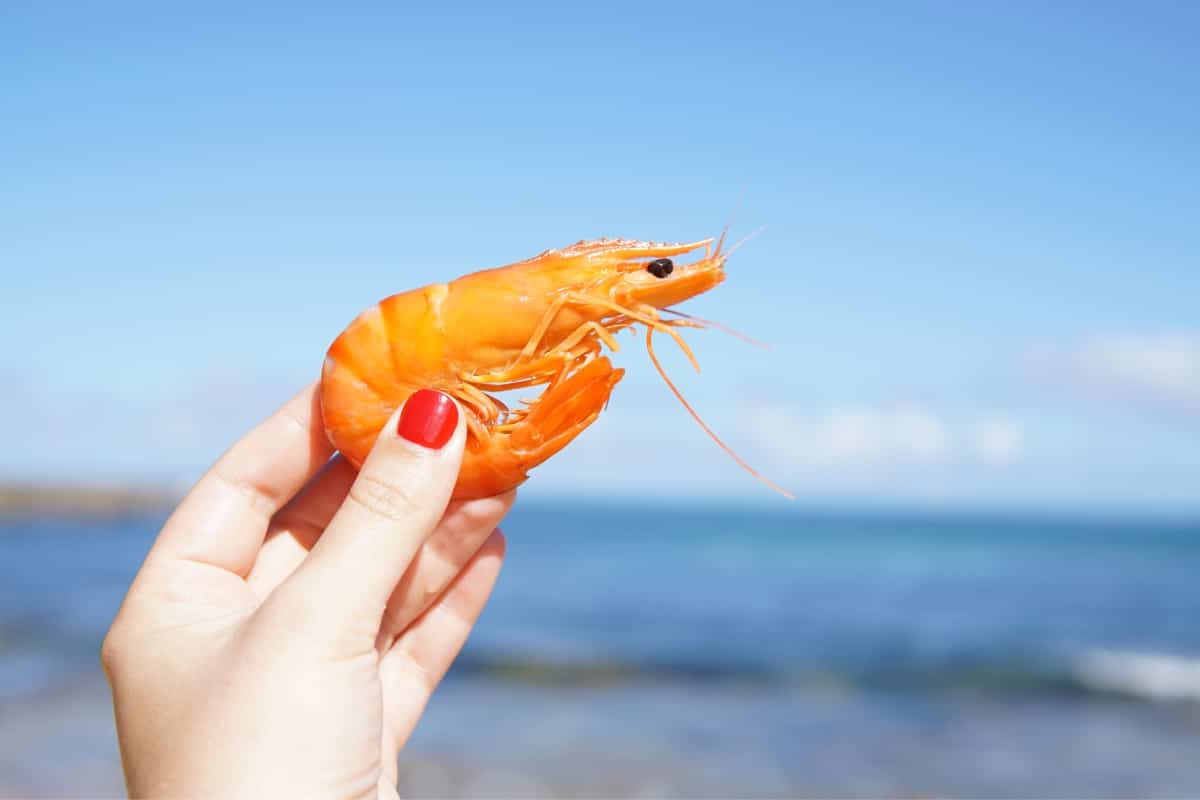
A big brook trout is one of my favorite trout to catch in the upper Sierras. I wanted to make sure you had a handy brook trout fishing tips guide to help you land a bunch.

Let’s get trout fishing!
Overview
Also known as Brookies, this trout is known for its beautiful olive-green coloring and yellow speckles that stretch across its back and sides. Although commonly considered a trout variety, brook trout is actually a member of the char genus and belongs to the Salmonidae family.
In its native habitat and other areas where their populations are high, brook trout is quite popular amongst fishing enthusiasts. Even though it’s considered elusive, it can be quite a catch.
Brook Trout Facts
Native to Eastern North America in the US and Canada, the brook trout is scientifically known as Salvelinus fontinalis. The scientific name is a reference to the brook trout’s natural habitat. The word Salvelinus is taken from a word that means “little salmon,” while fontinalis means “living springs.

There are potamodromous and anadromous populations of brook charr that are native to Lake Superior and Maine, respectively. They migrate to the waters to spawn and are commonly known as coasters.
However, habitat loss and overfishing have reduced the coaster populations of squaretail in these locations, increasingly confining them to higher elevations. Fortunately, efforts to restore and recover coaster trout populations are underway.
| Common Name | Brook trout, eastern brook trout, speckled trout, brook charr, squaretail, native brook trout, and mud trout. |
| Scientific Name (Genus and Species) | Salvelinus fontinalis |
| Family | Salmonidae |
| Identifying Characteristics | Brook trout are dark green to brown in color with distinctive red speckles surrounded by blue halos spread across the sides of the fish. |
| Depth Range | Prefers shallow clear waters, less than 15 to 20 feet in depth. |
| Natural History | Brookie fish prefer colder waters and usually inhabit small rivulets, creeks, and beaver ponds but they can also live in lake systems. |
| Limits | Check your local regulations |
Interesting Facts
Even though brook trout is famous for being the Michigan state fish, it is also the state fish of eight more, including New Hampshire, New Jersey, New York, North Carolina, Pennsylvania, Vermont, Virginia, and West Virginia.
Michigan Fish aka Brook Trout
As they are commonly found to cohabitate, people often get confused with brook vs. brown trout. Fortunately, the differences are easily distinguishable. For instance, the brown trout has a golden-brown body, while the brook trout is olive-green.
Furthermore, the brook trout is decorated with red spots with bluish halos, while the brown trout has red or yellow spots without edges or halos.
Brook Trout Habitat
They are found in large and small lakes, rivers, creeks, and springs of fresh, high purity waters. In the US, they can be found from the Hudson Bay basin and North Eastern Canada to a small portion of the upper Mississippi River drainage. You can also find them in Atlantic coastal areas from Maine to New Jersey and Georgia, along the Appalachian Mountains.
I’ve caught plenty of non-native brook trout in California as well.
How to Catch Brook Trout
Even though the brook trout is not the biggest trout, it is a beautiful fish that makes excellent table fare and challenging sport. Common angling techniques for brook trout include fly fishing and all other forms of fishing.
Brook Trout Tackle
A lightweight flexible rod with a spinning reel and a 6-pound test line is ideal for catching brook trout. Other than that, the same light tackle that is recommended for lake fishing works well for brook trout.
Brook Trout Lures & Baits

For brook trout, small lures work great. A variety of small artificial lures, not more than 2 inches long, are ideal.
For example, you can use the following:
- Mepps Aglia
- Small Mepps Syclops
- gold and silver spoons and spinners
As for bait, brook trout are opportunistic feeders and will take to most bait easily. Common trout baits work fine. However, make sure that you are allowed to use live bait where you are fishing.
Brook Trout Fishing Tactics
- Brook trout prefer to remain undercover in streams, such as under white-water pools and submerged logs. Approach the area from downstream cautiously and cast upstream, and let your bait float over the area you want to fish.
- In large rivers, the brook trout stay close to rapids and waterfalls as they like the bubbles, but they are also found in deep pools. Cast your lure directly in such areas, and you might be surprised by the shadow of the trout approaching the lure.
Brook Trout Fishing Tips
- If you’re fishing on a boat, make sure to troll slower. Move it fast enough for the lure to work but not too much that finding the bottom becomes hard.
- Put a trout on your line at least 2 and a half feet from your hook. From there, put sinkers every 6 inches to help steady the bait’s movement. This will allow the bait to reach straight to the bottom, preventing the line from going sideways and snagging.
Brook Trout Fly Fishing

When you are fishing for brookies, you’ll want to get the fly to drop down to where they are resting in the calm pockets of the river or stream. That means you’ll likely want to bring along some split shot weight or sinking line to help drop the flies down a bit.
Depending on the season, you can use a wet fly, dry fly, or even a dry fly nymph dropper setup. The fine folks over at Wilderness North recommend the following files:
Top Producing Brook Flies
- Woolly buggers
- White zonkers
- Baitfish imitations fly
- Caddis fly
- Olive duns fly
- Mouse flies (for the large trout)
Don’t forget. If you’re in a higher elevation and don’t want to carry as much stuff, you can still catch brook trout on the Tenkara rod.
Brook Trout Seasons
Brook trout prefer to live in cold waters of 53 degrees Fahrenheit or lower. This is why they are mostly found in waters located in colder areas, such as the Appalachian Mountains. In spring, you can find them in any river section. As the weather starts warming up in summer, you will probably have to travel downstream.
In winter, you can find brook trout about 10 feet deep and around the surface. In spring, they go deeper to find cooler waters at about 10-20 feet. Summer can be trickier as they travel to the deepest part of the water body.
How to Clean Brook Trout

- Using a sharp fillet knife, remove the head by cutting at a slight angle right behind the gills. This can require some force, especially when you’re cutting the backbone.
- Holding the trout with the belly exposed to you, cut a slit in the skin with the tip of your knife. Start from the vent, moving up the belly until you reach the throat.
- Expose the inside of the belly and use your thumb to push all the entrails or guts out.
- Using the tip of the knife, cut open the bloodline and remove it with your thumb.
- Use a knife or a spoon to scrape off the scales and slime off the skin as it helps with preservation.
- Rinse the gutted fish under cold water to remove any remnants of the guts. Your trout is now ready to be seasoned and cooked.
How to Cook Brookies
Brook Trout Recipe
- Rinse and pat dry the gutted and cleaned trout.
- Mix 2 tablespoons of salt, ¼ teaspoon of black pepper, and flour on a plate.
- Season the fillets with salt and pepper and insert 3 slices of lemon inside each fish.
- Dredge the fish in the flour mixture, shaking off the access.
- Heat an equal mixture of butter and olive oil in a skillet over medium-high heat.
- Add the fish and a few slices of lemon to the pan and cook until the fish is golden brown. (5-6 minutes on each side).
Frequently Asked Questions
They don’t have a particularly long lifespan and typically live for 3 to 4 years.
They are really good to eat. They are quick to cook and have a mild flavor. However, they can get a fishy taste as they get bigger and better off released than cooked.
They are opportunistic feeders and mostly eat small insects. Bigger fish preset larger invertebrates, including aquatic insects, snails, worms, and side swimmers. Some also feed on small fishes like minnows.
Insider Advice
Even though they are hard to catch, a simple rod and reel are ideal for fishing this trout. Stay close to shorelines and shallow bubbling brooks and river mouths. Cast your line so it reaches the bottom.
This can be a slow process, but with a little bit of patience, you will be rewarded with a catch of a lifetime.
Easily spooked, brookies can be a challenge for anglers. However, they are still coveted and can be exciting to catch and delicious to eat later on.




 Facebook
Facebook YouTube
YouTube







